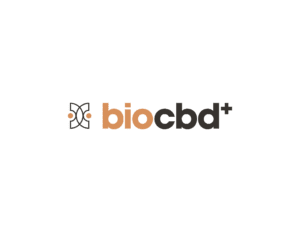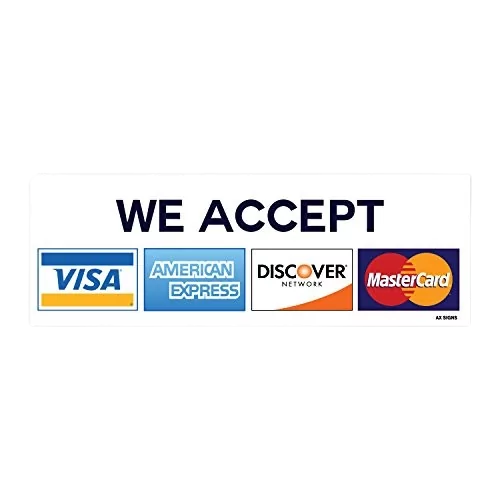biocbd+ has a strict “NO MEDICAL CLAIMS” rule for promotion of these products.
The FDA has offered guidelines, which we choose to follow, and comply with.
YOU are responsible for what you publish.
We are responsible for informing, best efforts in monitoring our affiliates, and the content they create to promote our products.
If you make ANY MEDICAL CLAIMS WHATSOEVER, your account will be suspended.
The one exception to this is the government’s own patent: 507 Patent
- We can make claims that are made are as a part of the US Govt 507 Patent which states that CBD is an anti-inflammatory, a neuroprotectant, and an antioxidant.In fact, now at the bottom of every page we have: biocbd+™ supports the findings of the US Government in patent # US 6630507 “Cannabinoids as antioxidants and neuroprotectants,” which praises Cannabidiol (CBD) for its antioxidant properties. Antioxidants are vital to not only health maintenance, but also the prevention and maintenance of oxidation associated diseases such as Parkinson’s disease, autism, ADHD, Asperger’s, depression, Chronic fatigue syndrome, and some cancers. biocbd+™ also supports the further research into not only these areas but also into the additional therapeutic values of Cannabidiol.
- Please have your team review this FDA Guidelines list: http://www.nutraceuticalsworld.com/issues/2013-11/view_columns/structurefunction-claims-a-bright-line-rule-or-ambiguity
Making, and intent to make claims
As biocbd+ attempts to meet the FDA’s guidelines, we provide the information below as an informative guide. Please do not consider this to be legal advice, or to be representative of anything other than our best understanding to share of what we can, cannot permit you to do to promote our products.
Please do not use or reference other people’s stories using CBD to help with medical or health issues. This is considered an implication that biocbd+™ products have medicinal value, and is strictly prohibited. FDA goes by “INTENT” to make a claim, so be careful please. Do not post or refer to articles or news stories regarding people or animals using CBD for health or medical conditions. This includes articles referring to laws passed due to sick children, feature stories about people using hemp CBD products, etc. Again, this would be considered “intent” to make a claim.
Do not talk about your personal experiences with our products in any detail. It is not acceptable to talk about your personal use of our products. You may not use customer testimonials ever if they are of a health or wellness, ‘medical claims’ nature. Positive customer service experiences or “tastes great!” kind of testimonials are fine.
Admittedly, structure/function claims are not easy to develop. The line between a permissible and impermissible claim can be difficult to discern, even for the most experienced copywriters, regulatory affairs personnel and attorneys. FDA has promulgated a set of rules to help guide companies in drafting permissible claims. However, the agency has been inconsistent in its application. To help provide some clarity, a summary of those rules follows below, and you can find the rules at 21 CFR 101.93.
1. A claim may not suggest that the product has an effect on a specific disease or class of disease [21 CFR 101.93(g)(2)(i)]. Examples of impermissible claims under this criterion are: Reduces the pain and stiffness associated with arthritis; Helps alleviate the pain associated with migraine headaches. Examples of claims that do not violate this criterion are: Helps build and strengthen joint cartilage; Helps maintain a healthy heart.
2. A claim may not refer to a characteristic sign or symptom of a disease or class of disease [21 CFR 101.93(g)(2)(ii)]. Examples of impermissible claims under this criterion are: Helps alleviate cloudy vision; Relieves painful joints (widely ignored by the joint health industry); Helps lower cholesterol levels (widely ignored within the industry). FDA considers these claims impermissible because they are so associated with specific disease conditions or risk of disease (i.e., cataracts, arthritis and heart disease). However, while FDA has sent warning letters over cholesterol claims, it has not gone further if the offending claim has not stopped. Indeed, a reasonable argument exists that a simple “helps lower cholesterol” claim, without any other indicia that the claim is a “reduces the risk of heart disease” claim, is a permissible structure/function claim. Of course, this assumes that the product does not contain a nutrient or dietary ingredient that is the subject of an FDA-permitted health claim. Examples of claims that are permissible under this criterion are: Helps maintain healthy LDL cholesterol levels that are already in the normal range; Helps maintain proper joint function; Helps alleviate minor aches and pains associated with strenuous exercise.
3. References to signs and/or symptoms of natural states are permissible as long as they are not uncommon and cannot cause significant harm if left untreated [21 CFR 101.93(g)(2)(iii)]. Examples of impermissible claims under this criterion are: Helps reduce inflammation by blocking the COX-2 enzyme; Helps alleviate BPH; Helps with erectile dysfunction. Examples of permissible claims under this criterion are: Alleviates symptoms associated with PMS; Promotes sexual vigor and performance. FDA’s position on inflammation (that all inflammation claims are disease claims) is nonsensical. Inflammation is happening in our bodies as you read this article, and it is important to maintain a healthy inflammatory response for overall health. Thus, while inflammation may be characteristic of certain diseases, it is also an indication of overall good health and should be considered a proper structure/function claim. Similarly, cholesterol, blood pressure, blood sugar and triglycerides are also indications of overall good health, and reducing these levels that are in the high-end of the normal range should be encouraged and not discouraged. More on this issue in a moment.
4. A claim may not be disguised as a product name [21 CFR 101.93(g)(2)(iv)(A)]. Examples of impermissible product names are: Cho-less-terol; Arthex; Diab-eet-ees. There are many companies that believe if a product name is trademarked, it is not subject to FDA’s rules or FTC’s requirement that a claim be substantiated. It is clear from both an FDA and FTC perspective that if a product name communicates a particular meaning (alleviates migraines), it is subject to the same rules as any other product claim. Accordingly, do not use a disease condition in the product name under the false assumption that neither the FDA nor the FTC can take issue with the brand name. Examples of permissible product names are: Mood Health; Joint Flex; Heart Health
5. A claim may not refer to a supplement’s formulation if the statement suggests that the product is/was an FDA-regulated drug and it is well known to be used to prevent or treat a disease or health-related condition [21 CFR 101.93(g)(2)(iv)(B)].
6. Citations to an article that refers to a disease in its title are permissible if the labeling, taken as a whole, does not imply a disease prevention or treatment claim [21 CFR 101.93(g)(2)(iv)(C)]. However, reference to an article that refers to a disease is not permitted on the product’s label or immediate packaging. To ensure compliance with this criterion, the article 1) should not be characterized in the copy; 2) should appear at the end of the promotional materials as part of a bibliography of other articles; and 3) the article should be balanced. Moreover, a bibliography that contains more than an insignificant number of articles that refer to a particular disease would be considered suspect by FDA and should be avoided.
7. The use of the terms disease, diseases, antiviral, antibacterial, antiseptic, antibiotic, diuretic, antidepressant, vaccine, analgesic or any other word that would suggest that the product belonged to a class of products intended to cure, treat or prevent disease, is not permitted [21 CFR 101.93(g)(2)(iv)(D)]. Examples of impermissible claims are: Stimulates the body’s antiviral capacity; A natural analgesic without the side effects associated with NSAIDs. Examples of permissible claims are: Helps maintain proper immune function; Helps reduce stress and tension; Helps alleviate occasional constipation.
8. The use of pictures, vignettes, symbols or other means in a manner that would otherwise suggest the presence of a disease condition is not permitted [21 CFR 101.93(g)(2)(iv)(E)]. A picture of a hand with the joints highlighted in red may be considered an implied “disease” claim because the red highlight could be interpreted as a sign of pain or arthritis. Alternatively, however, a picture of a hand, standing alone, would probably not be considered a “disease” claim because it does not reference a particular endpoint—joints and pain. FDA takes the absurd position that the heart symbol is an implied disease claim. This position is illogical as the claim, “Helps support a healthy heart,” is a permissible structure/function claim.
9. A claim may not suggest that the supplement or its ingredients belong to a particular class of drugs or are a substitute for a particular therapy [21 CFR 101.93(g)(2)(v) and (vi)]. Examples of impermissible claims are: Herbal antidepressant; Helps maintain joint health without the use of NSAIDs.
10. A claim may not suggest that a product is useful as a companion to regular drug therapy or that it prevents or treats adverse events associated with a disease if the adverse events are also disease conditions [21 CFR 101.93(g)(2)(vii) and (ix)]. Examples of impermissible claims are: Helps maintain blood sugar levels in insulin-dependent people; Helps stimulate the immune system when undergoing chemotherapy; Helps individuals using antibiotics to maintain normal intestinal flora.
11. FDA also has a catch-all-rule to allow it to complain about any claim it does not believe is a permissible structure/function claim [21 CFR 101.93(g)(2)(x)].
biocbd+ reserves the right to create, publish, and use any owned, bought or licensed content, of any kind, anywhere, for any purpose, as regards its brand, and products.
———————————————————————————————-
If you, or your team have any questions about what can, or cannot be said, how to promote, describe or otherwise encourage the purchase of biocbd+ products, please contact us –> affiliates@biocbdplus.com



